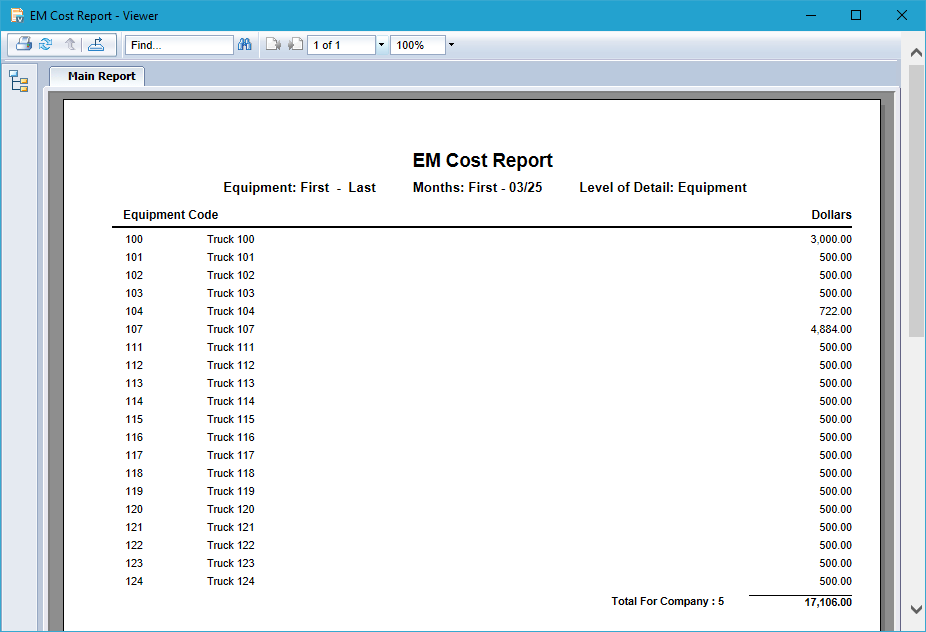Getting Started #
If you’ve incurred equipment costs prior to go-live—such as maintenance, repairs, or ownership expenses—be sure to import these records to reflect accurate equipment history and balances.
Template Info #
- Required Source Data
- Equipment #
- Cost Code #
- Cost Type #
- Actual Date
- Description
- Cost
- Optional Source Data
- N/A
- Additional Tips
- The example shows importing summary balances by Equipment / Cost Code / Cost Type, but you can also import full Equipment detail using the same method. The only difference is the number of records—the required values and import steps remain the same.
- Basic Steps
- Download TAD Template
- Copy the Source Data
- Import the Records
- Post Open Batch
- Validate Imported Data
Download TAD Template #
Open your source data file in Excel.
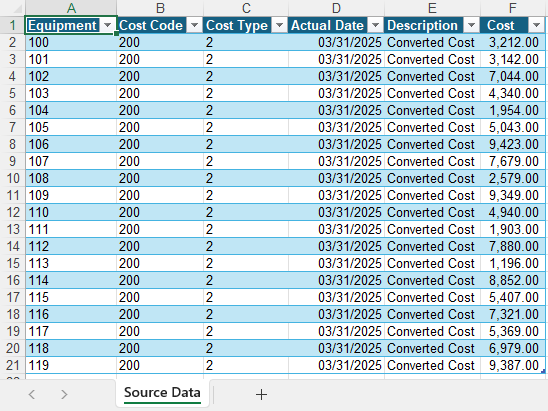
Click the Templates button on the left side of the ribbon.

If you’ve signed into TAD before, then you should receive the message below. Click Yes.
If you have not signed into TAD before, follow the Get Connected instructions.
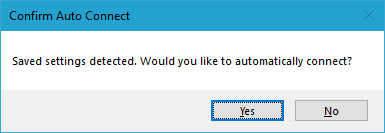
Select the Implementation Balance – EM Equipment Cost template.
Click the Download Selected button.
Verify your Company number and click the Download button.
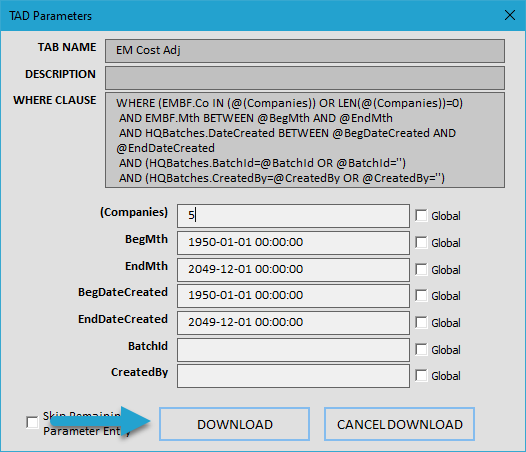
The EM Cost Adjustments sheet is used to import the job cost.
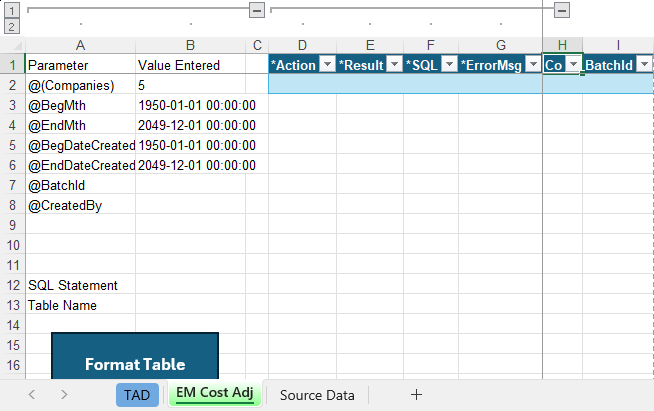
Copy the Source Data #
Copy and paste the source data into the EM Cost Adj sheet. If your source data layout matches the example above, this will be a single copy and paste since the EM Cost Adj columns are already in the same order.
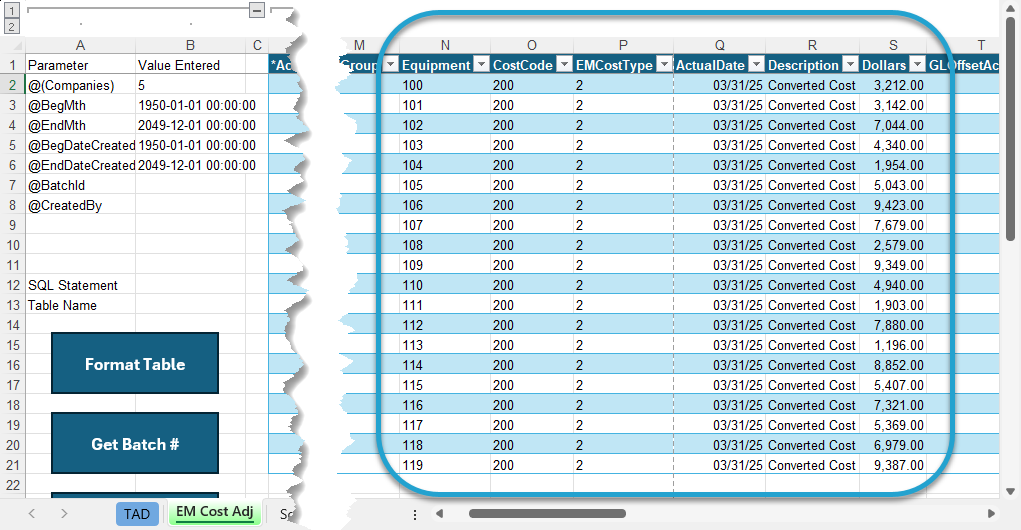
Enter your Suspense or Clearing GL Account in the GLOffsetAcct column.
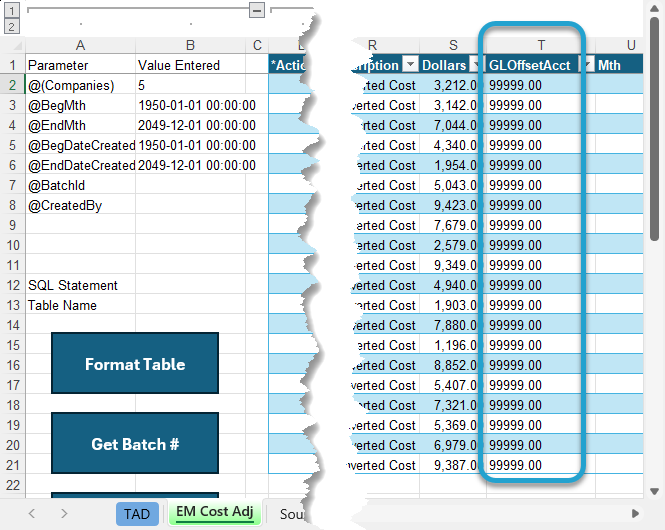
Import the Records #
Click the submenu of the Format Table button on the ribbon and choose the Regenerate Excel Formulas button. This will apply formulas to multiple columns.

The Mth column defaults to the current month. Update this value if you’re loading balances as of the prior month.

Click the Format Table button to format the data you copied and to apply missing default values.
This will also apply the UM (Unit of Measure) based on the Equipment / Cost Code / Cost Type setup in Vista, and the GLTransAcct based on the EM Department setup in Vista.
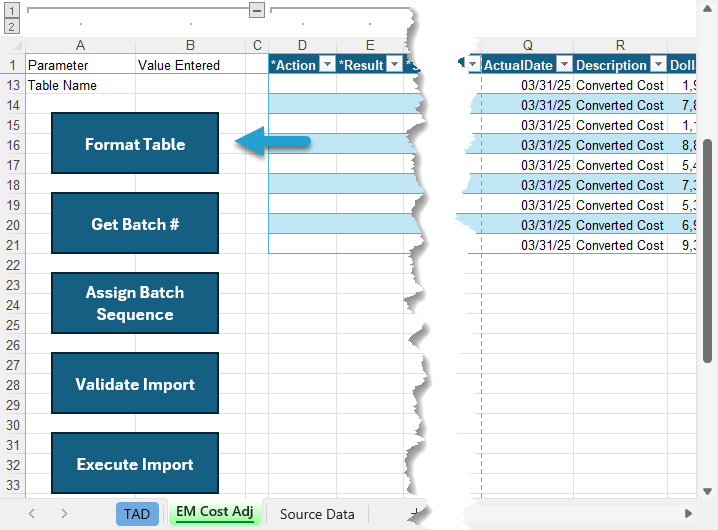
The *Result column will show Formatted for every record. You will see the default Company number applied.
Click the Get Batch # button to assign the next batch number.

The *Result column will show Batch #XX Assigned for every record.
Click the Assign Batch Sequence button to assign a sequential value to each record.

The *Result column will show Batch Sequence Assigned for every record.
Click the Validate Import button.

The *Result column will show Validated for every record. If this says Failure, then the *ErrorMsg column will provide the error.
Click the Execute Import button.

The *Result column will show Imported for every record.
That completes all steps needed in TAD. You can now open the batch in Vista to validate and post.
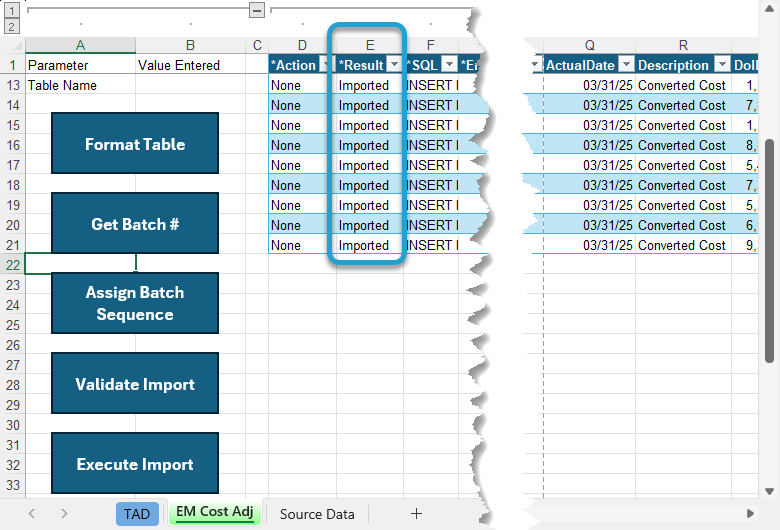
Post Open Batch #
Before opening the EM Cost Adjustments batch, you need to turn off Interfacing to the General Ledger. This prevents the batch from posting GL activity, which we do not want when loading these balances.
In Vista, go to Equipment → Programs → EM Company Parameters.
On the Adjustments tab, write down your existing value for the GL Adjustments Interface. Then select No Update, click Save and minimize the form.
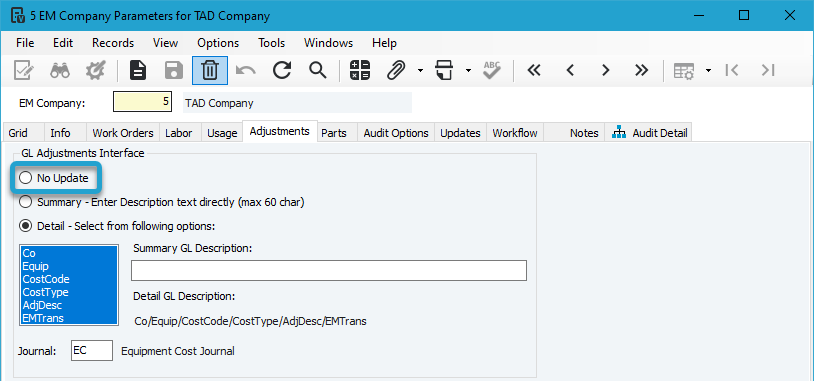
Now you can open the batch in EM Cost Adjustments.
With the batch open, go to File → Process Batch, then click the Validate button followed by the Post button.
Once the batch posts, make sure to change your Interface Levels back to their normal values.
Validate Imported Data #
You can validate the Job Cost by running the EM Cost Report report in Vista.
Enter your Company and the Ending Month for the month that you just imported.
Make all other parameters look like the image below.
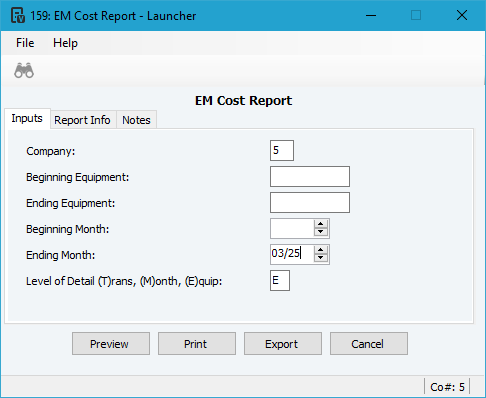
Verify the Total Dollars total at the end of the report matches the transactions that you imported.
